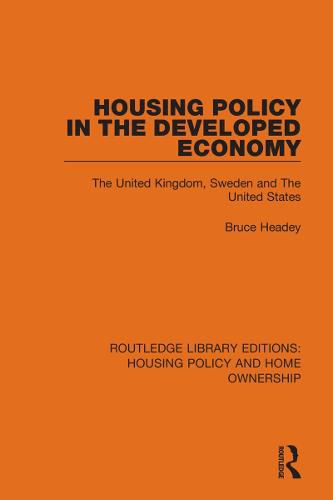Readings Newsletter
Become a Readings Member to make your shopping experience even easier.
Sign in or sign up for free!
You’re not far away from qualifying for FREE standard shipping within Australia
You’ve qualified for FREE standard shipping within Australia
The cart is loading…






Originally published in 1978, this book analyses three main approaches to national housing policy in the 20th Century in Sweden, the UK and USA. It reviews policy developments and considers the impact of policy on the housing conditions and costs of different sections of the community. A major theme is that British and American governments, contrary to their stated objectives, have actually increased housing inequality by allowing homeowners tax concessions which are more generous than the housing welfare programmes available to tenants. The political pressures which produced this outcome in Britain and the USA, but a quite different and more egalitarian outcome in Sweden, are carefully discussed. Throughout the book, policy making is regarded as involving trade-offs between what is politically feasible and what is operationally feasible. This framework enables readers to view policy making from the perspective of politicians and civil servants as they react to diverse demands and pressures and seek to devise housing programmes which embody incentives to which housing financiers builders and consumers will respond.
$9.00 standard shipping within Australia
FREE standard shipping within Australia for orders over $100.00
Express & International shipping calculated at checkout
Originally published in 1978, this book analyses three main approaches to national housing policy in the 20th Century in Sweden, the UK and USA. It reviews policy developments and considers the impact of policy on the housing conditions and costs of different sections of the community. A major theme is that British and American governments, contrary to their stated objectives, have actually increased housing inequality by allowing homeowners tax concessions which are more generous than the housing welfare programmes available to tenants. The political pressures which produced this outcome in Britain and the USA, but a quite different and more egalitarian outcome in Sweden, are carefully discussed. Throughout the book, policy making is regarded as involving trade-offs between what is politically feasible and what is operationally feasible. This framework enables readers to view policy making from the perspective of politicians and civil servants as they react to diverse demands and pressures and seek to devise housing programmes which embody incentives to which housing financiers builders and consumers will respond.